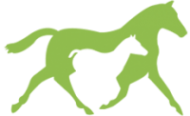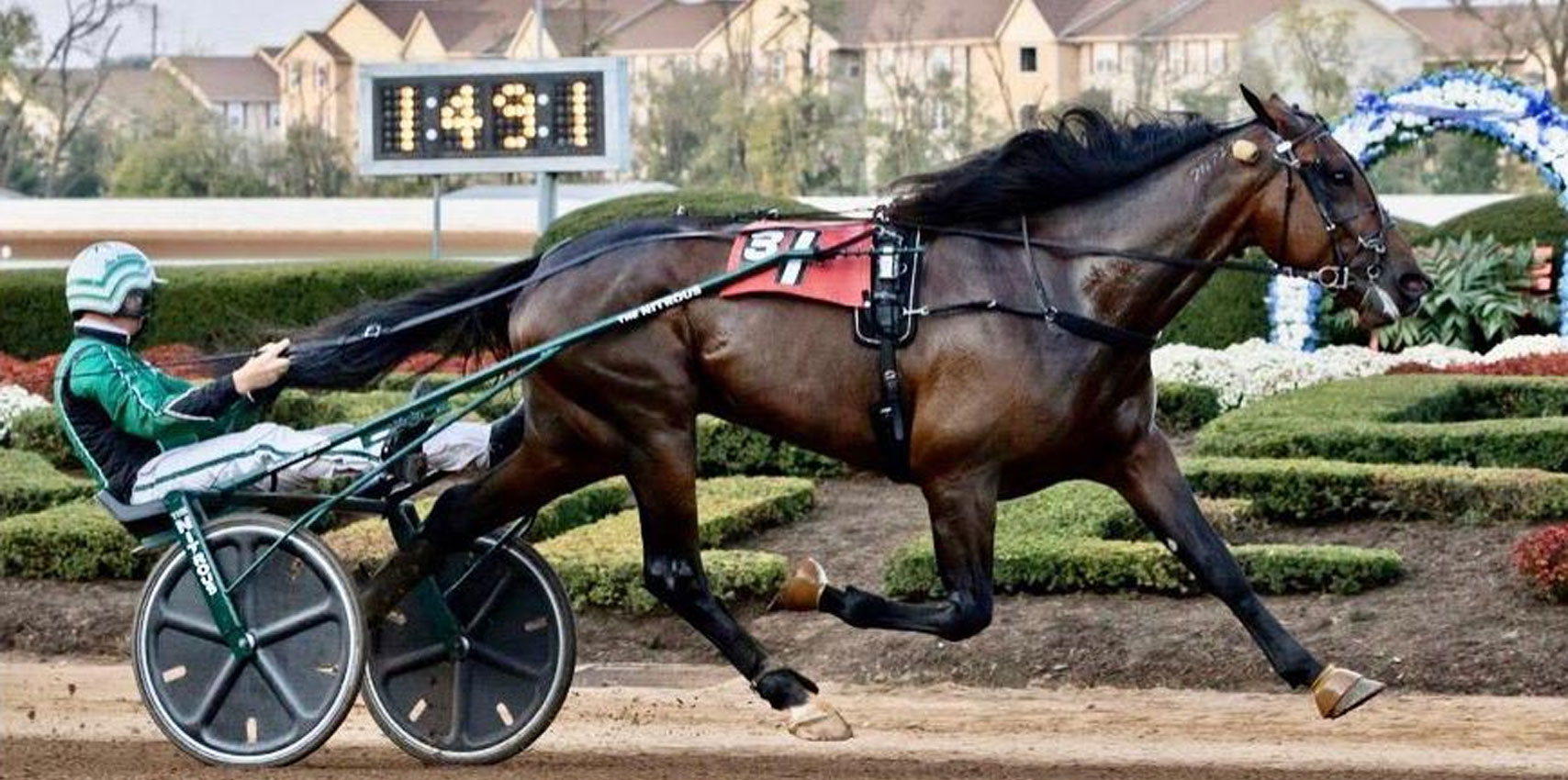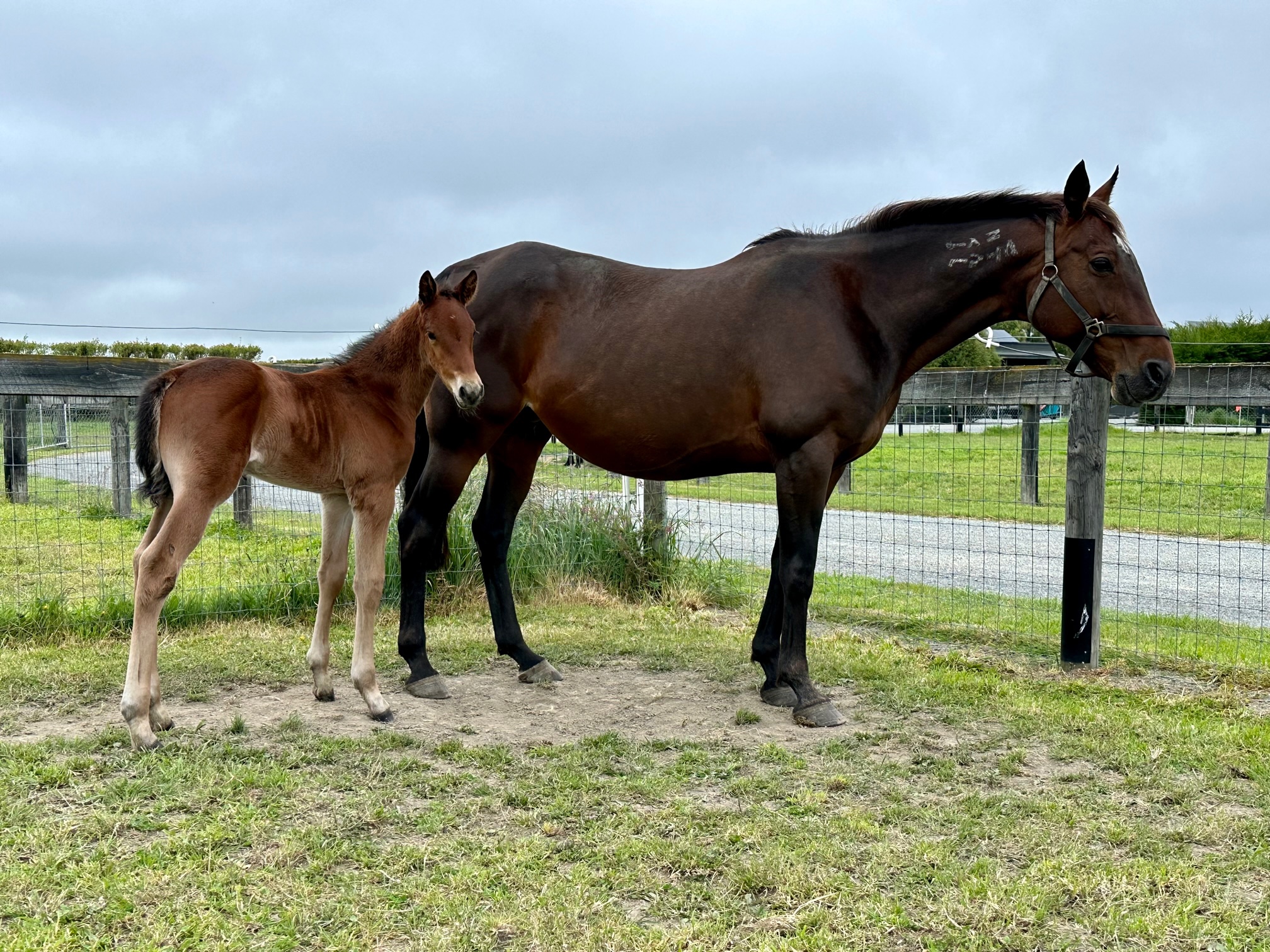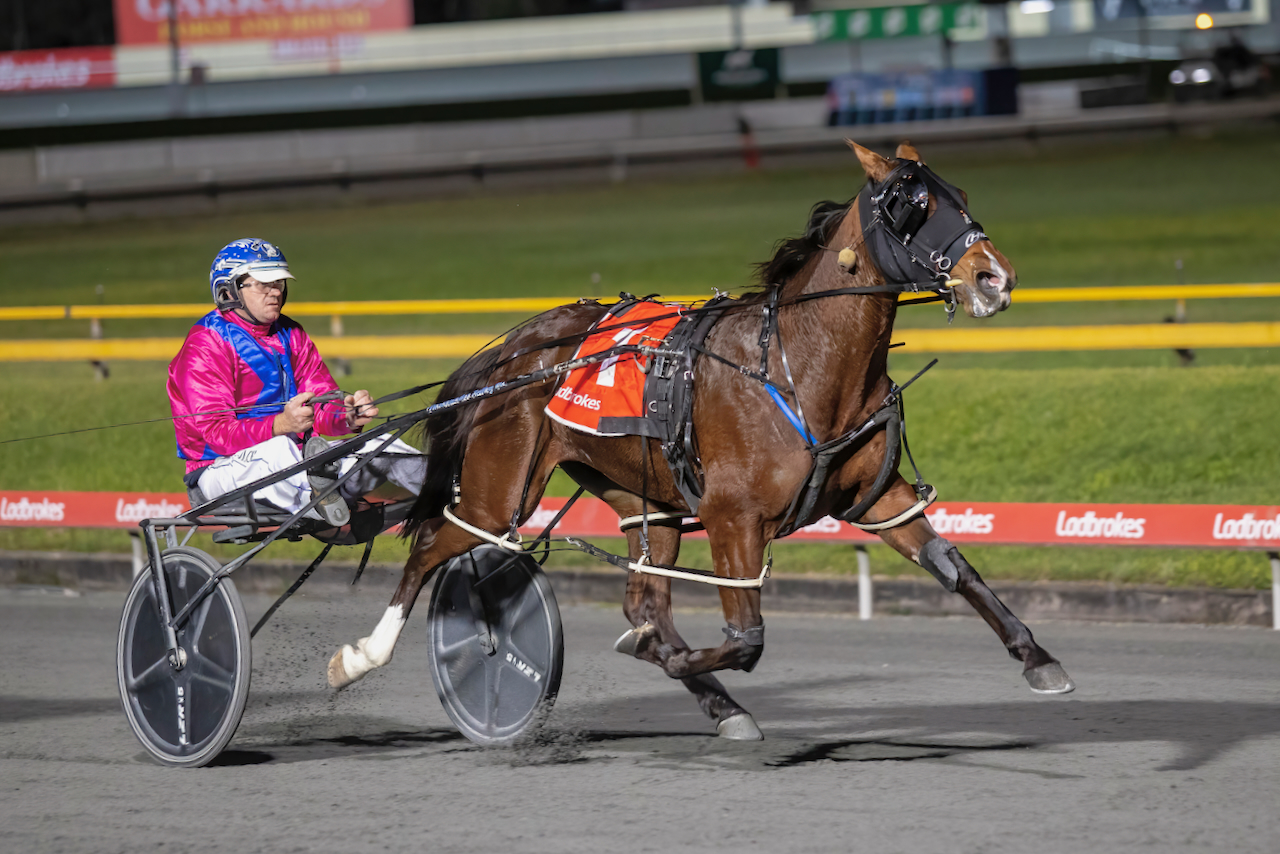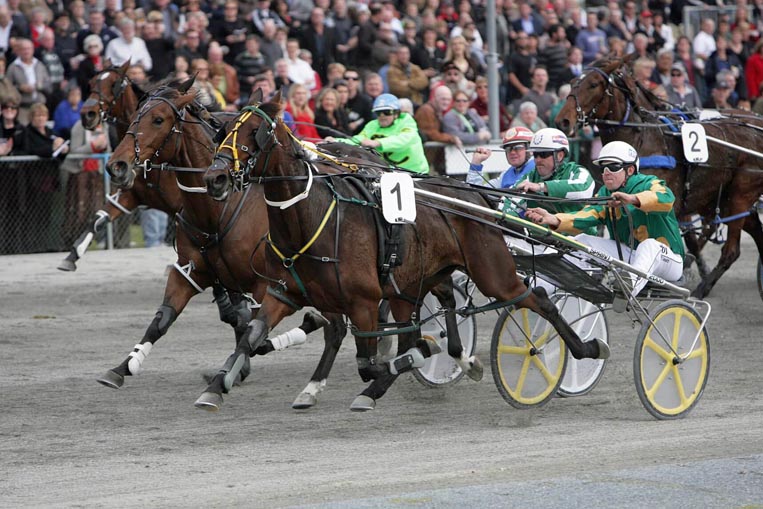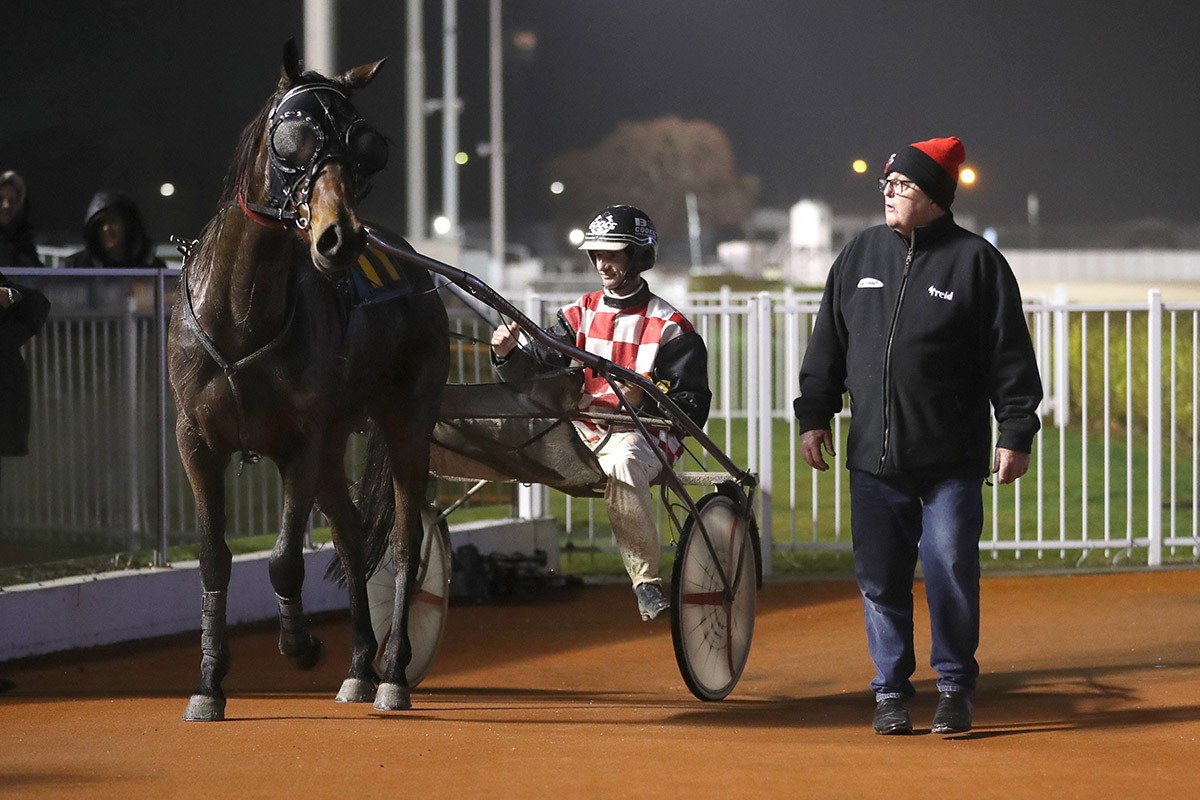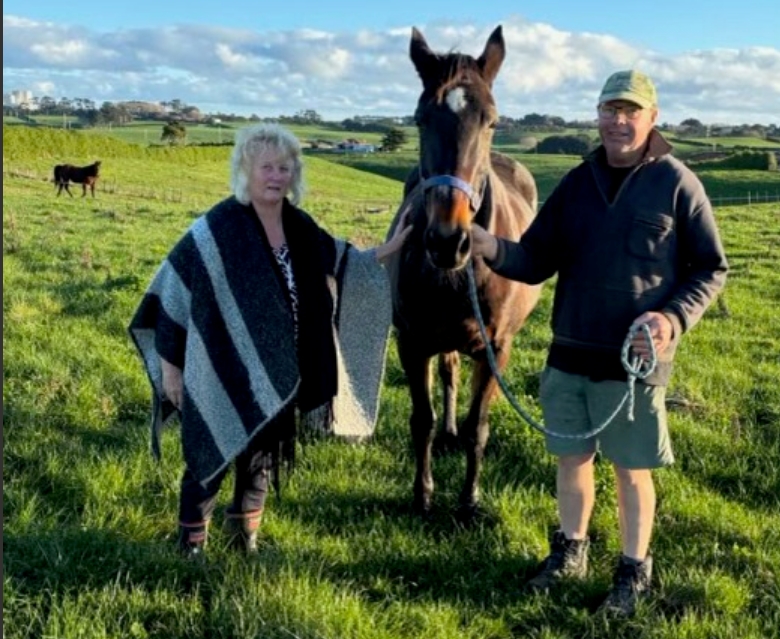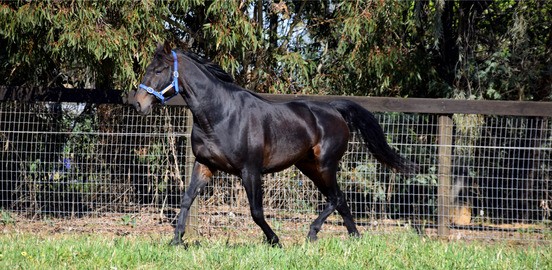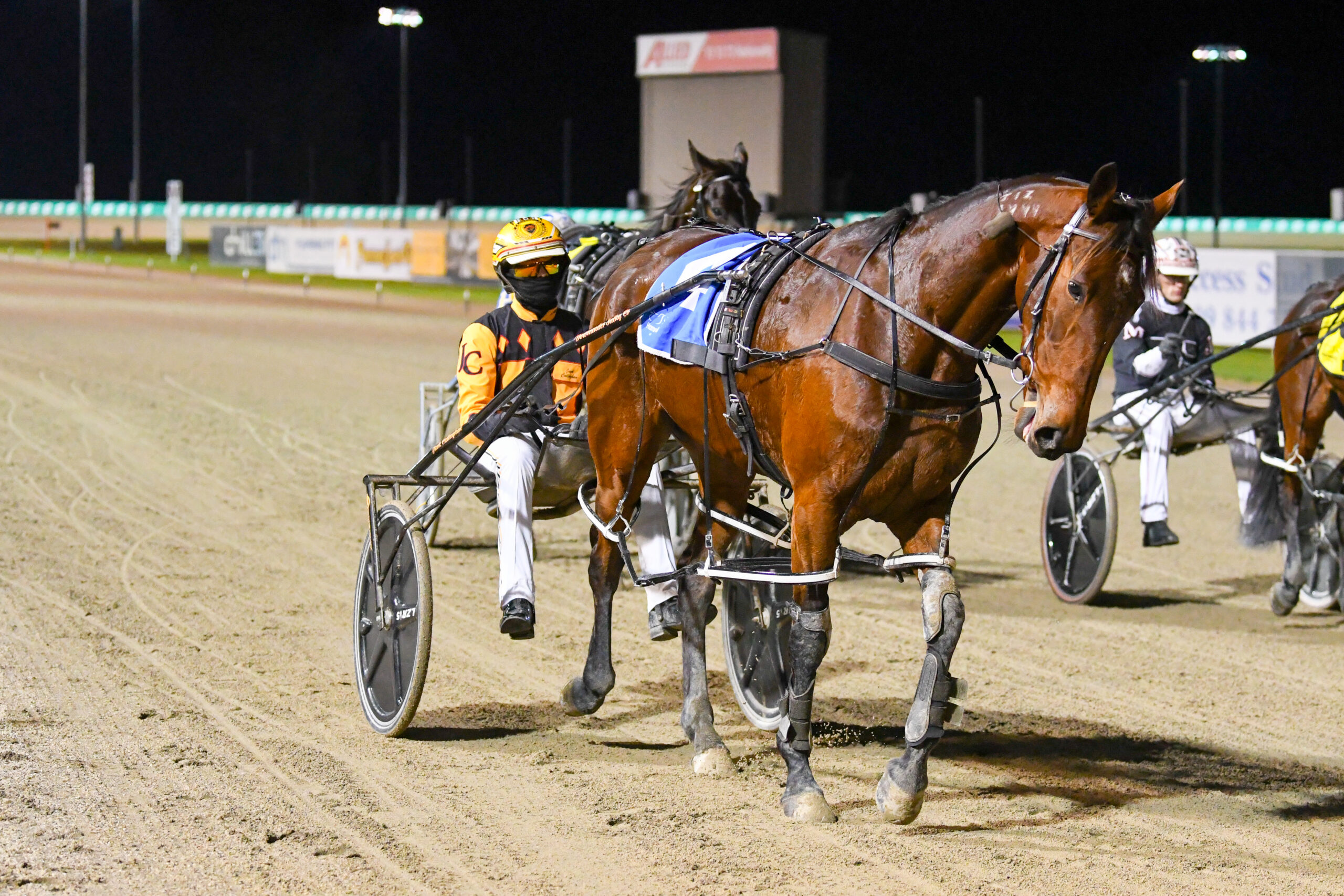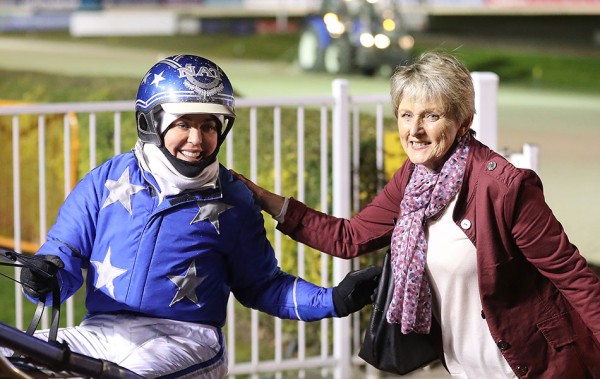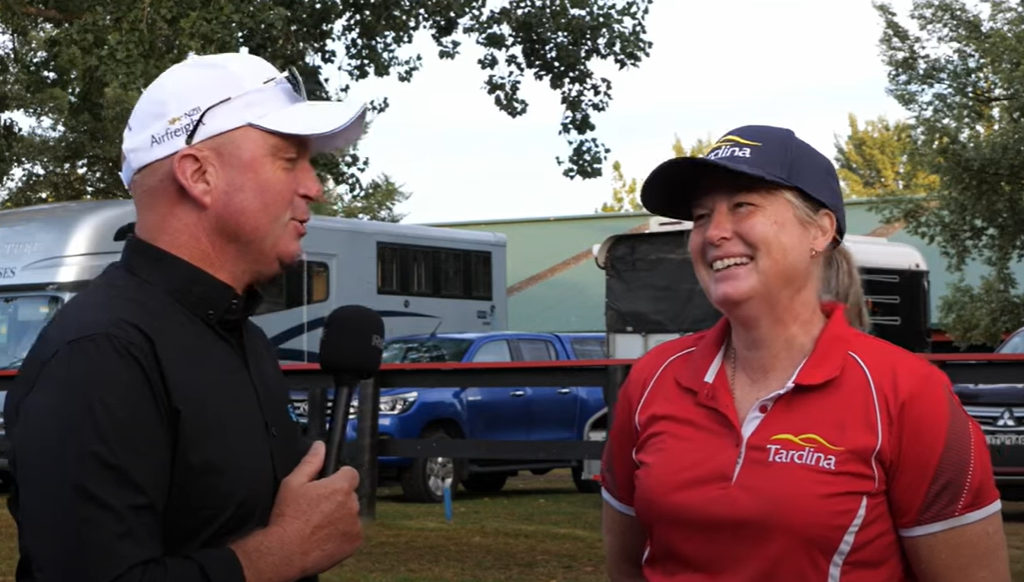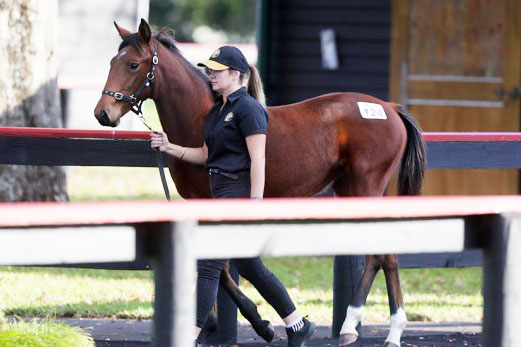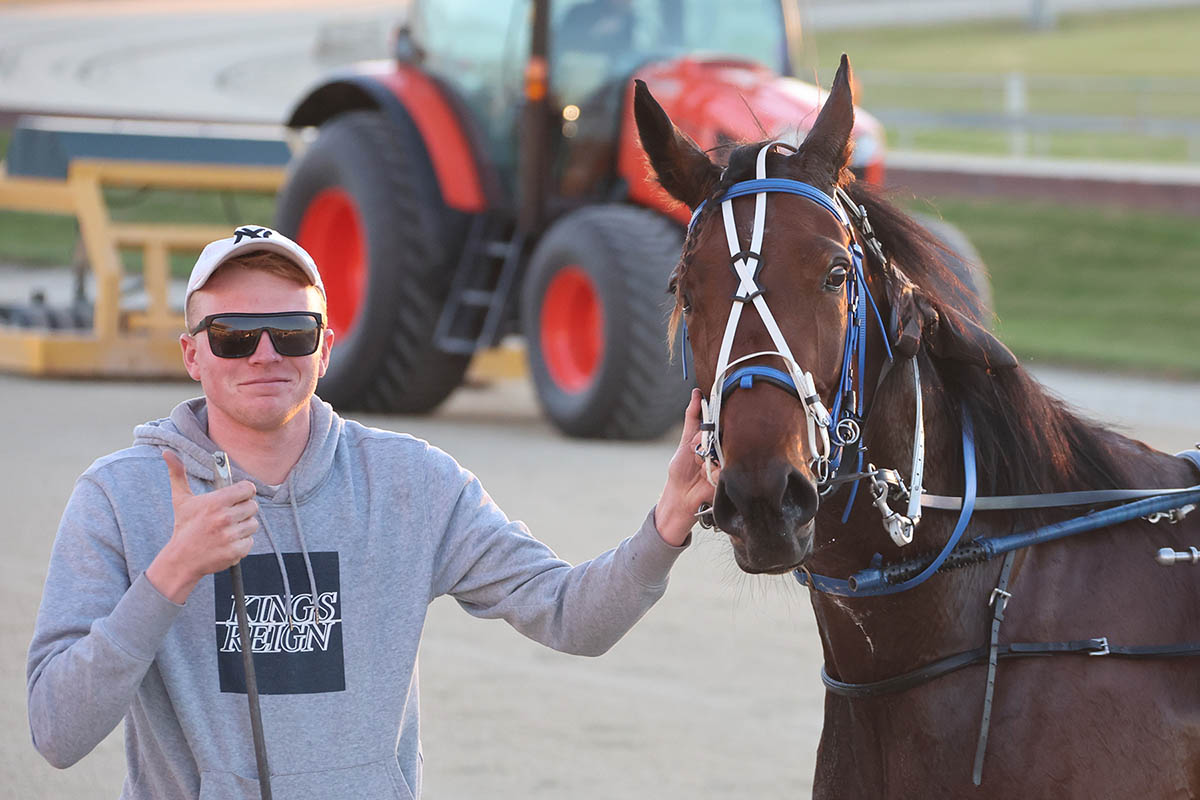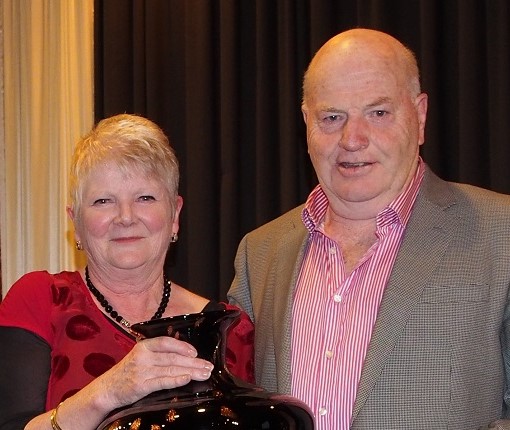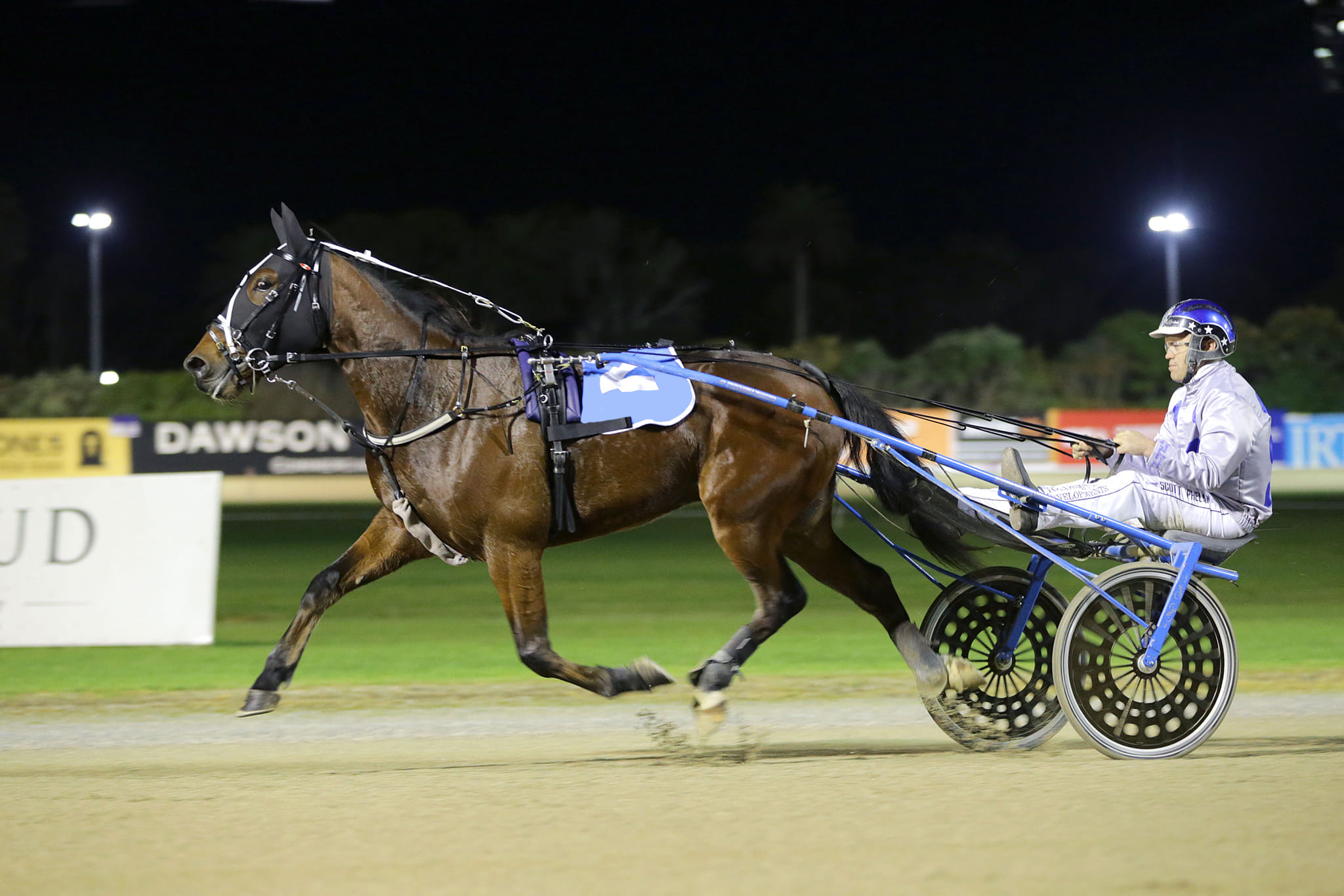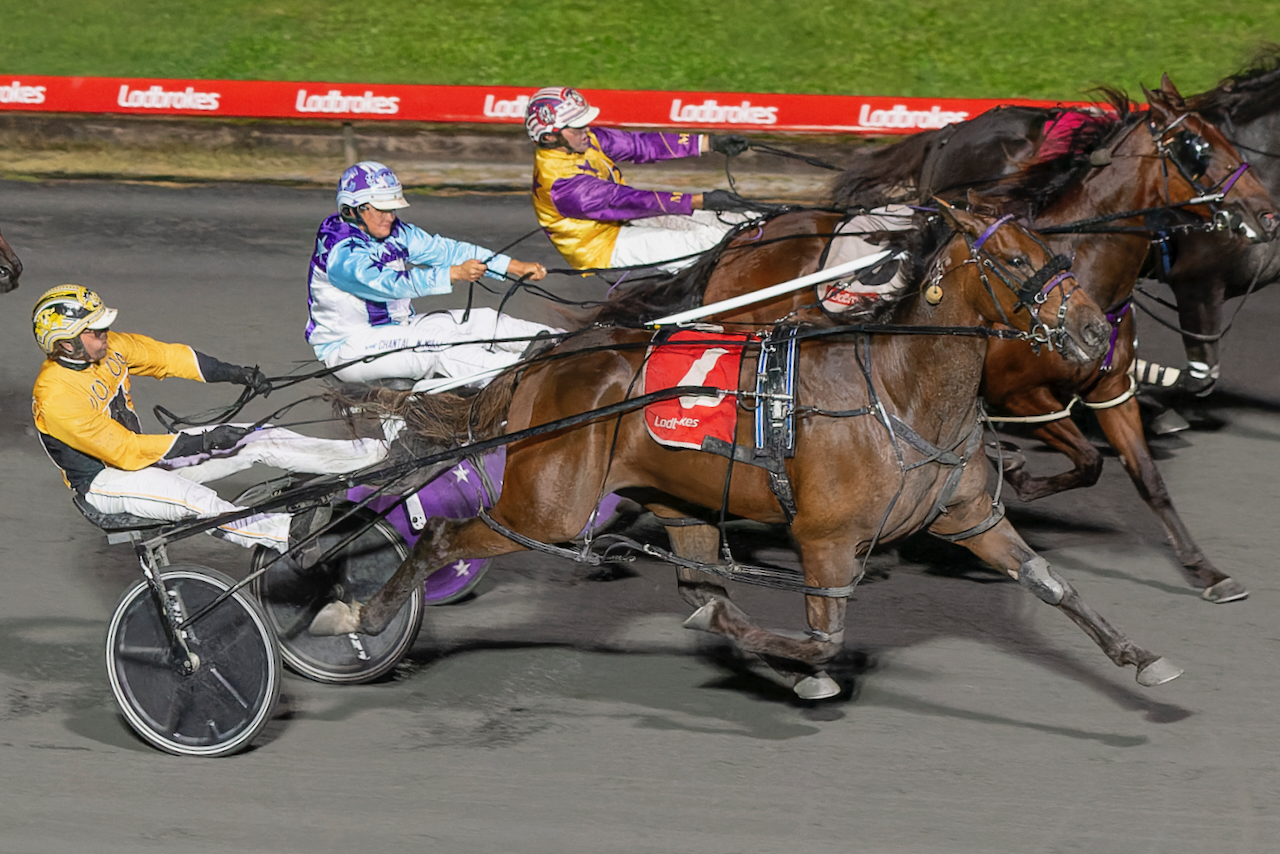Two milestones for Tristan Larsen on both sides of the Tasman
By Duane Ranger
Fifteen days after driving his first Australian winner, and 28th overall, Southland horseman, Tristan Larsen, has now tasted success as a breeder for the first time.
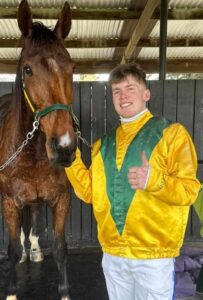
Tristen Larsen, after saluting in Australia for fellow Kiwi expat Brent Lilley
The 20-year-old junior driver, who is currently spending the winter working at Brent Lilley’s Bolinda stable in Victoria, bred Hunting Weight to her first victory in 25 starts.
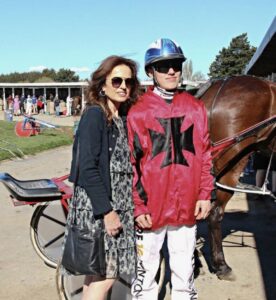
Tristan and mum Michelle
The 5-year-old Stunin Cullen – Hoshi Bromac (Falcon Seelster) mare, who is trained by Brett Gray at Ryal Bush, won race two at Winton last Thursday (August 10) by two-and-a-half-lengths.
Brent Barclay did the driving. She is owned by the M C C Syndicate.
Larsen’s first Australian driving success came via the Brent Lilley trained Kyvalley Heist at Yarra Valley on July 26. That was three years and one-month after his maiden victory behind Kirk Larsen (Dad) trained Duke Of Dundee at Ascot Park (June 27, 2020).
But Larsen said he loved the breeding side of the industry as much as he did, driving and working horses.
“I’ve always loved the breeding side of the game. I’ve been to Sales since I was young, and I’ve listened to what my parents and other breeders have had to say over the years.
“It’s always intrigued me and even though I’m still learning, I enjoy crossing certain stallions with various families. I enjoy reading the Sales books each year.
“I bred Hunting Weight with Mum (Michelle), who bred the first four foals out of the mare, but I had to wait until I was 18 before I could get my name in the race-book as a breeder,” Larsen said.
“I’m proud to have bred her with Mum, because she knows how much I enjoy the breeding side of racing,” he added.
He said he crossed Hoshi Bromac with Stunin Cullen because he won a free service to that stallion when Kirk Larsen trained, and Barclay driven Risk Factor won at Forbury Park on July 1, 2016.
In late 2016 Hoshi Bromac became the recipient of the free service, and then on October 27, 2017, Hunting Weight was born.
“I was actually going to put her to Sweet Lou, but when the free service came along I decided to put Sweet Lou to another mare I was breeding from at the time named Regina Coeli (2005 two-win Christian Cullen – Highfield’s Delight – Holmes Hanover mare). Sadly, both that foal, and the mare died,” Larsen said.
Hoshi Bromac, who won one of her 20 starts, is the sixth of nine foals out of the 1992 Holmes Hanover – Her Highness (Lordship) two-win mare, Honour Bromac (1:55.1), who was bred by A J Crawford.
Her second foal, the 2001 Badlands Hanover gelding, Howard Bromac, was a pacing giant, who won 17 of his 73 starts (22 placings) and $628,395, including the 2005 Auckland Cup, the 2005 New Zealand Free-For-All, and the 2006 Waikato Flying Mile.
“It’s a pretty good family all right. I turned two the month after Dad trained and drove Howard Bormac, which he co-bred, to win the Auckland Cup.
“I’m also breeding out of one of Hunting Weight’s older sisters – a 9-year-old Western Ideal mare out of Hoshi Bromac named Varenna.
She was the best horse that Hoshi Bromac has left. Varenna was really fast and proved that when winning easily by two lengths at Winton (December 11, 2016) with a slashing 1:55.2-mile rate. Unfortunately, she only had 15 starts due to injury.
“Spreydon Lodge bred the first two Vincent foals out of her (2yo filly and yearling colt), and I had her served by Captain Crunch in December.
“Sadly, Hunting Weight is the last foal out of Hoshi Bromac. The mare died in 2018 (December 7). That’s sad because she left nice, big foals.
“I think this fella can win a race or two more yet,” Larsen said.
Larsen was educated at Southland Boys High School and then worked for four years at Gray’s Ryal Bush barn before heading to Victoria on July 1.
“I’ll head home in the spring to work for Dad, because he’s got a pretty big team at the moment, and I know he could do with a hand.
“Dad, Mum, Brett and now Brent, have all helped me along the way and I’m grateful to them all for what they have done for me.
“Australia a real big learning curve, and so is breeding. I hope to do more of both in the future,” Larsen said.

